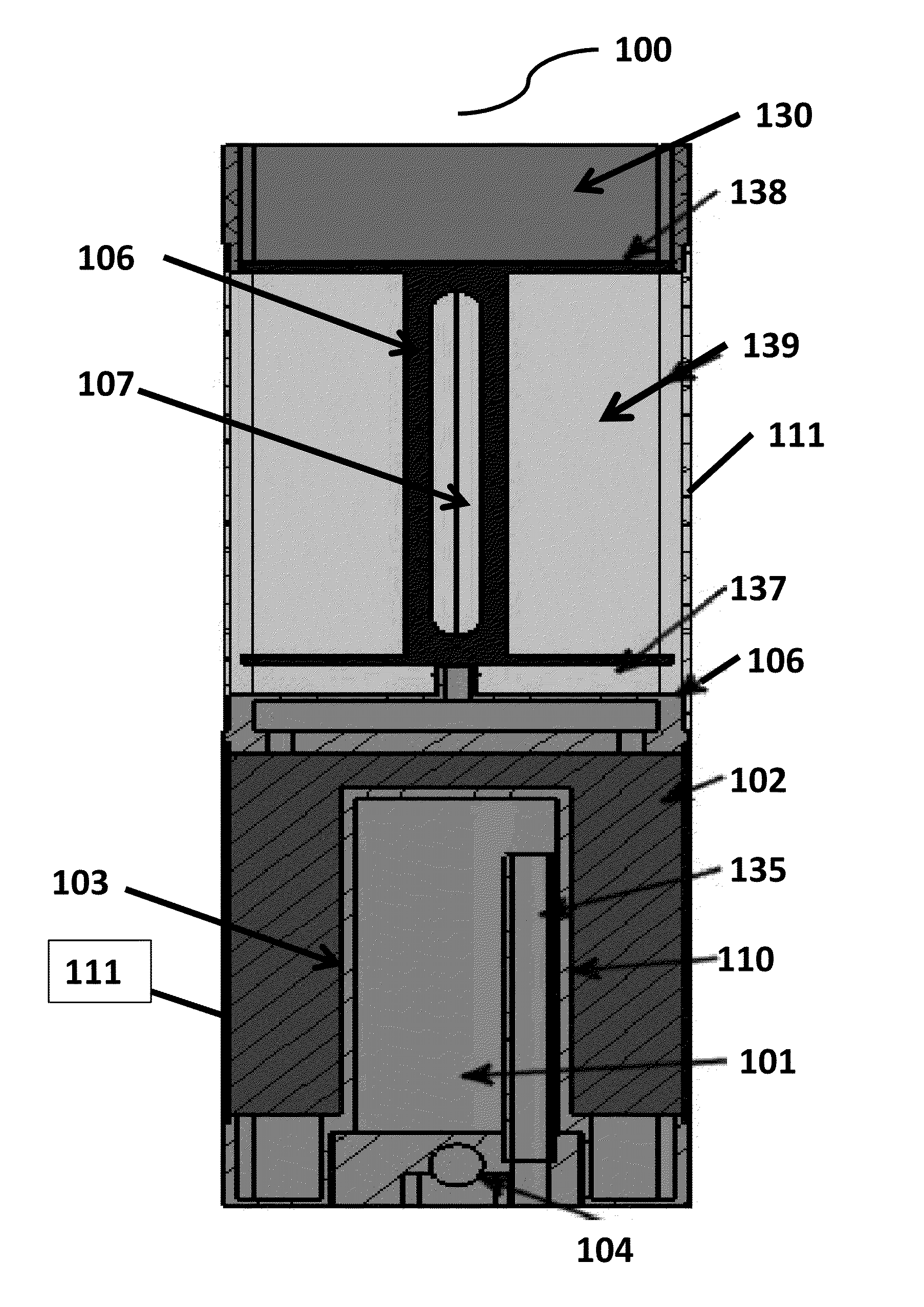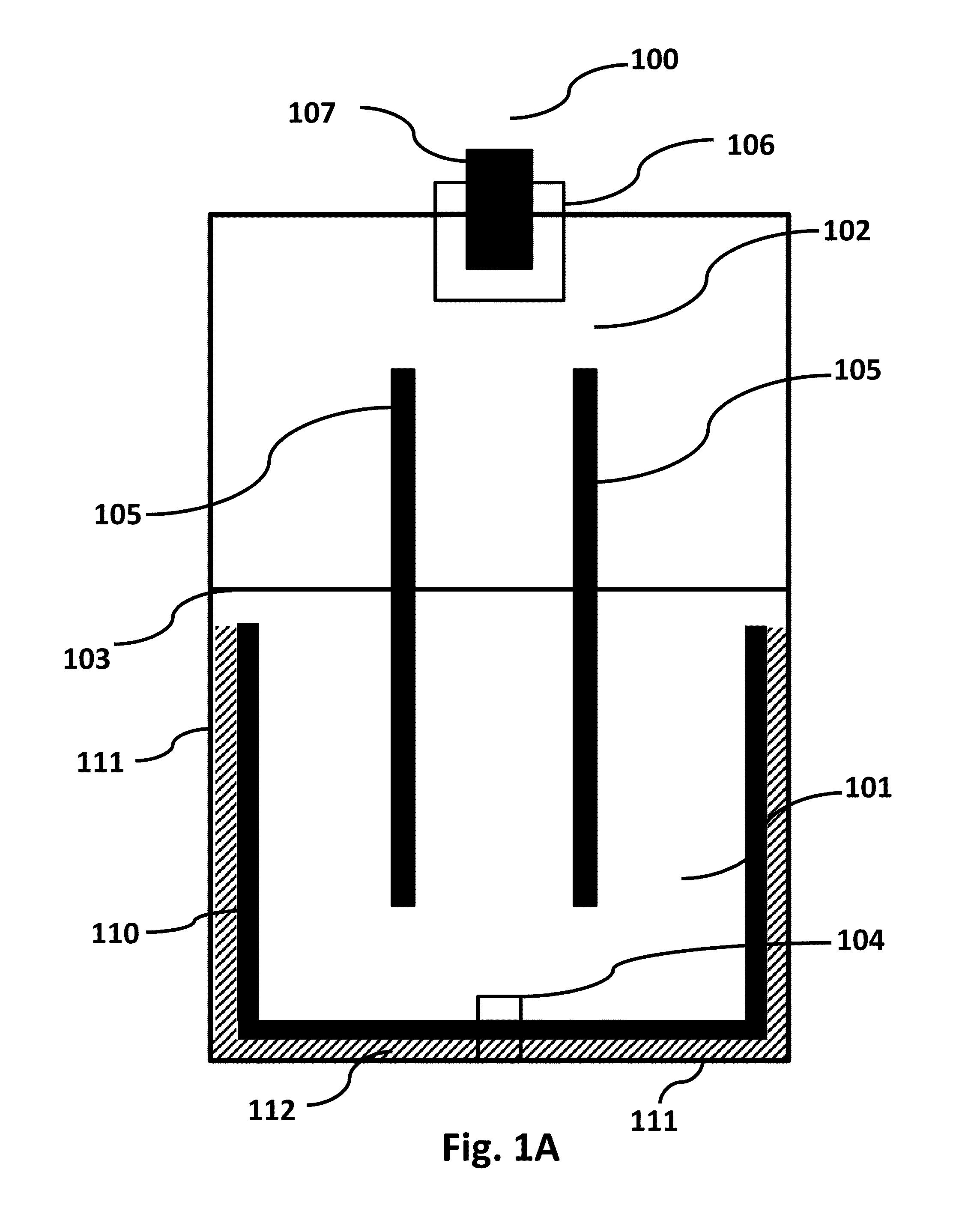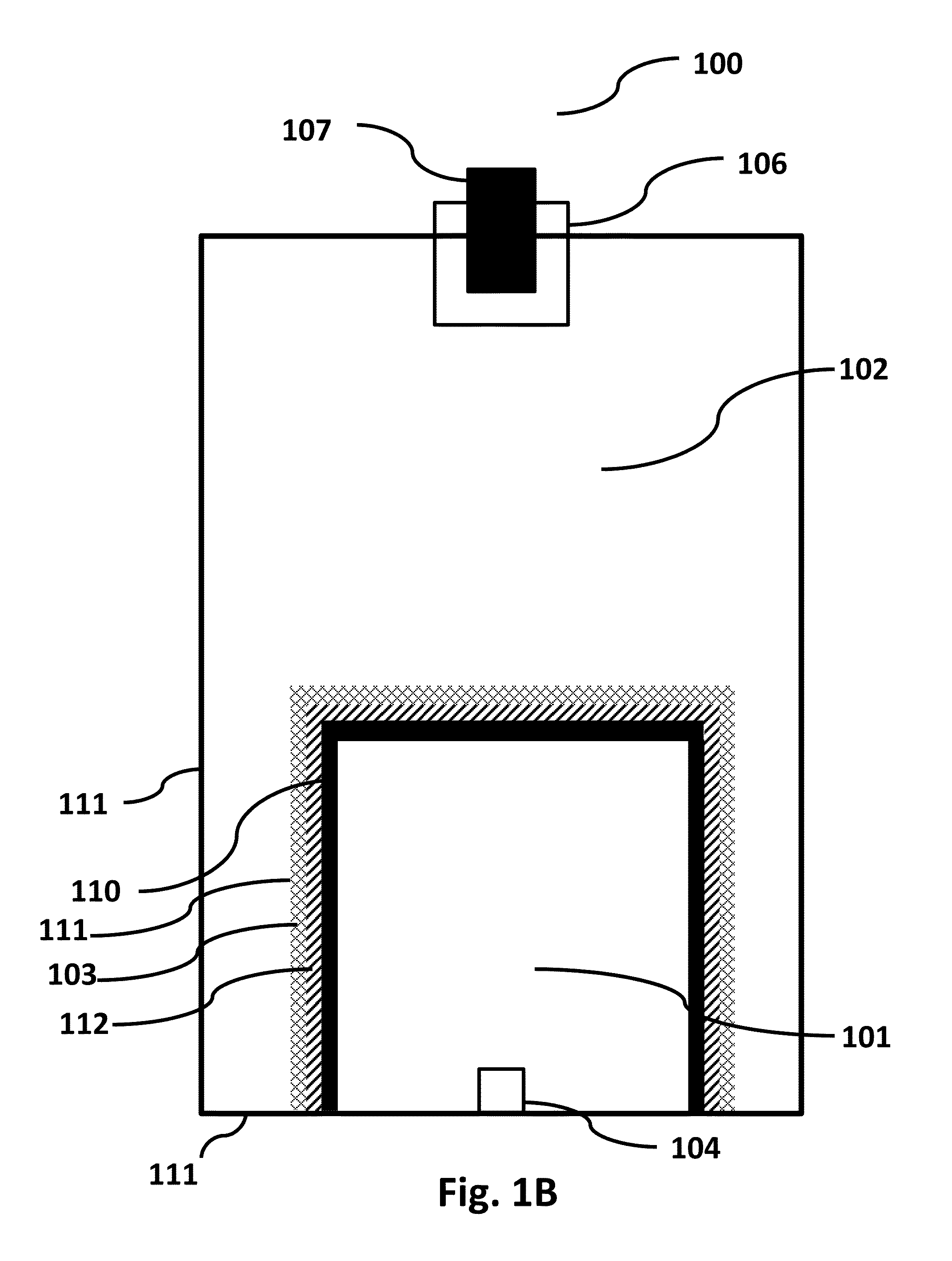Thermal hydrogen generator using a metal hydride and thermite
a technology of metal hydride and thermite, which is applied in the direction of instruments, transportation and packaging, and explosives, can solve the problems of simple inefficiency, inaccuracy of spatial data, and asset availability, and achieve the effects of high efficiency, very small volume, and very rapid hydrogen generation
- Summary
- Abstract
- Description
- Claims
- Application Information
AI Technical Summary
Benefits of technology
Problems solved by technology
Method used
Image
Examples
examples
[0077]The thermite reaction produces a large amount of heat in a short period of time from a small volume of material. In an example implementation using 38.5 g of thermite, the thermite reaction releases nearly 152,988 J of energy over a period of about 10 seconds, or 15,299 J / sec.
[0078]Further to the volume efficiency of this approach, the hydrogen source, a metal hydride, is a very volume efficient source of hydrogen gas (H2). A test filling of a balloon was performed. The final balloon volume was measured at approximately 42 liters at the conclusion of the test. Given ambient pressure (0.82 atm) and temperature (300 degrees Kelvin or 27 degrees Celsius), this corresponded to 1.40 mole of hydrogen being produced. Working from the reactions presented above, the 30 g of LiAlH4 should have yielded 1.18 moles of hydrogen if only the first two reactions went to completion (which is the design criterion), or 1.57 moles if all three reactions went to completion. The measured value of 1....
PUM
 Login to View More
Login to View More Abstract
Description
Claims
Application Information
 Login to View More
Login to View More - R&D
- Intellectual Property
- Life Sciences
- Materials
- Tech Scout
- Unparalleled Data Quality
- Higher Quality Content
- 60% Fewer Hallucinations
Browse by: Latest US Patents, China's latest patents, Technical Efficacy Thesaurus, Application Domain, Technology Topic, Popular Technical Reports.
© 2025 PatSnap. All rights reserved.Legal|Privacy policy|Modern Slavery Act Transparency Statement|Sitemap|About US| Contact US: help@patsnap.com



